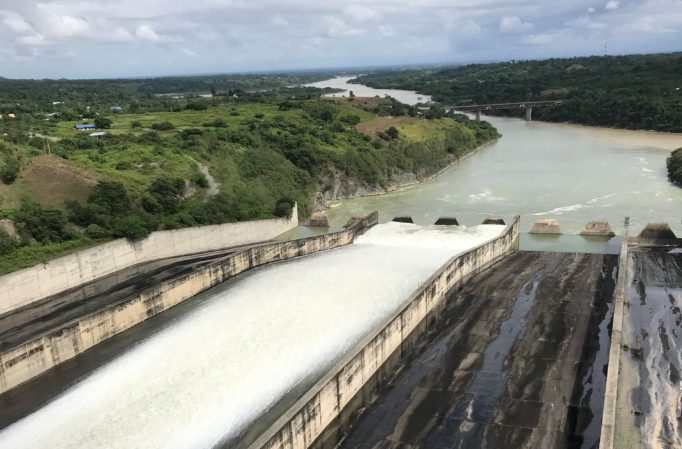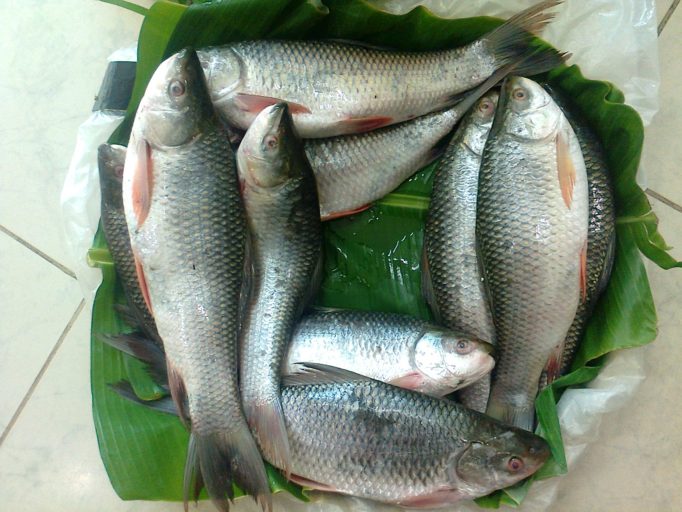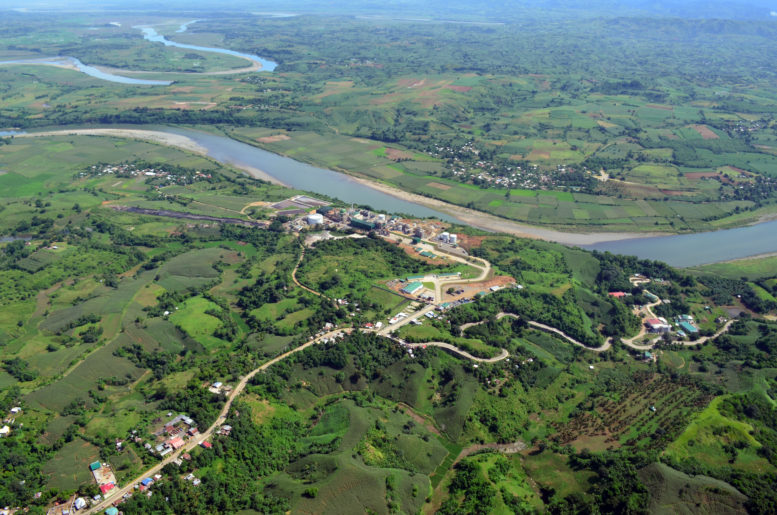The Cagayan River is known throughout the Philippines as the “Rio Grande de Cagayan” because it is the longest, largest and widest river in the Philippines. The length of the river is about 350 km and has a drainage basin covering 27,753 sq. km, flowing along the provinces of Apayao, Aurora, Cagayan, Ifugao, Isabela, Kalinga, Mountain Province, Nueva Vizcaya and Quirino. The Cagayan River is located in the Cagayan Valley, northeast of Luzon. Cagayan Valley has 5 provinces: Batanes, Cagayan, Isabela, Nueva Vizcaya, and Quirino. Cagayan Valley has 4 cities, namely, Cauayan, Ilagan, Santiago, and Tuguegarao.
The Cagayan River’s yearly discharge is approximately 53,943 million cubic meters with a groundwater reserve of 47,895 million cubic meters. The Chico River and Magat River are tributaries to the left of Cagayan River, while Ilagan River and Pinacanauan River are tributaries to the right. During the monsoon season in Southeast Asia from May to October, the overflowing of the Cagayan River and its tributaries cause extensive flooding in the nearby provinces, specifically from Tuguegarao to Aparri and from Ilagan to Tumauini, Isabela.

Magat Dam, located at the Magat River, a Tributary of the Cagayan River. Photo Credit: DENR
There are virgin forest lands, abundant with lush flora and fauna surrounding the vicinity of the Cagayan River, where the Luzon Bleeding Heart Pigeon (Gallicolumba luzonica) and the Philippine Eagle (Pithecophaga jefferyi) are both endemic and endangered species. There are also very fertile valleys along the Cagayan River where farmers grow rice, corn, bananas, coconut, citrus and tobacco.
Charlie Lagasca and Czeriza Valencia, reported in the Philippine Star on 3-October-2014: “39 fish and shellfish species in Cagayan Valley have been identified as endangered due to destructive fishing, the Bureau of Fisheries and Aquatic Resources (BFAR) said yesterday. “BFAR is undertaking conservation efforts, including inventory of the species’ remaining habitats, and an information campaign to save them from extinction,” said Jovita Ayson, BFAR Regional Director. These species include the Ludong (Mullet), Hito (Catfish), Dalag (Mudfish), Gurami (Snake-Skinned Gourami), Igat (Eel), Mori (Gobi), Agurong (Trumpet Snail), Bisukul (Native Snail), Cabibi (Clam), and Ulang (Giant Freshwater Prawn).”
Mark Djeron Tumabao and Max Prudencio (BFAR) reported in the Philippine Information Agency on 9-February-2018: “The Bureau of Fisheries and Aquatic Resources (BFAR) have recently completed its comprehensive plan to conserve Ludong following the approval of a related project proposal.”
Dr. Evelyn Ame, national focal person on Ludong, said the project amounts to Php26 million, and the plan is to build on the initial accomplishments made by BFAR under the Oplan Sagip Ludong Project, since its launching in 2010, with 3 components: (1) Socio-Cultural, Biological and Environmental Studies; (2) Establishment of Breeding Facility and Breeding in Captivity; and (3) Sanctuary Establishment, Regulatory and Livelihood.
Under the first component, BFAR would conduct resource and sociology-economic profiling, and assessment of fishing technologies along Ludong Fishing Communities; biophysical assessment of selected Ludong Niches; larval survey of Ludong; and taxonomic identification of Ludong and Ludong-like species. Dr. Ame, who is BFAR RO2 Training Chief, said that the studies would enable BFAR to have more comprehensive information, needed for the conservation of the species; and enable the agency to implement resource mobilization and livelihood opportunities to increase income of the fisherfolk.
Under the second component, BFAR would establish a Ludong facility in the town of Claveria for the artificial breeding of Ludong. This sub-activity shall complement related initiatives being done by the Isabela State University in Roxas, Isabela.
Under the third component, BFAR would recommend to LGUs concerned the establishment of Ludong sanctuaries. BFAR shall conduct fishery law enforcement training for river wardens. The wardens will in turn be tasked to safeguard said sanctuaries and assist the agency in the enforcement of fishery regulations.
The Ludong (Cestreaus), known as the “President’s Fish,” is rare and indigenous to the headwaters of Cagayan River and some river systems in Ilocos Region. The fish is Catadromous — it spends most of its life in fresh water, then migrates to the sea to breed. The Ludong does its annual spawning in time with the Ludong closed season during October 1-November 15 every year. Known as the Philippines’ most expensive fish, its price has reached almost Php6,000 per kilo in recent years. “With this finding, we are inching closer to our goal to close the life cycle of Ludong and thus, ensure its sustainability,” said Dr. Milagros Morales, BFAR Regional Director.

Ludong, the Philippines’ Most Expensive Fish. Photo Credit: Philippine Information Agency
The Cagayan River is awesomely grand in scale and proportion. The surrounding majestic virgin forest adds allure to its mystical panorama. What the local government of Cagayan Valley should do is to impose restrictions in order to conserve the river’s marine life. Bringing of food should not be allowed near the river in order to prevent trash from finding its way into the river. Illegal fishing should likewise be strictly prohibited.
Most importantly, the Philippine government, involving Congress, should pass a Bill for the conservation of the Ludong Fish endemic to the Cagayan River and its tributaries. BFAR is seeking Php26 Million to fund the conservation program for the Ludong Fish. For the sake of protecting the sustainability of our endemic Ludong, our Legislators should support this endeavour.
